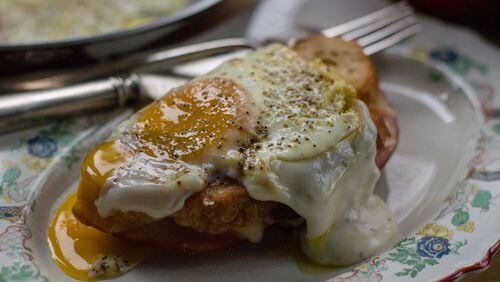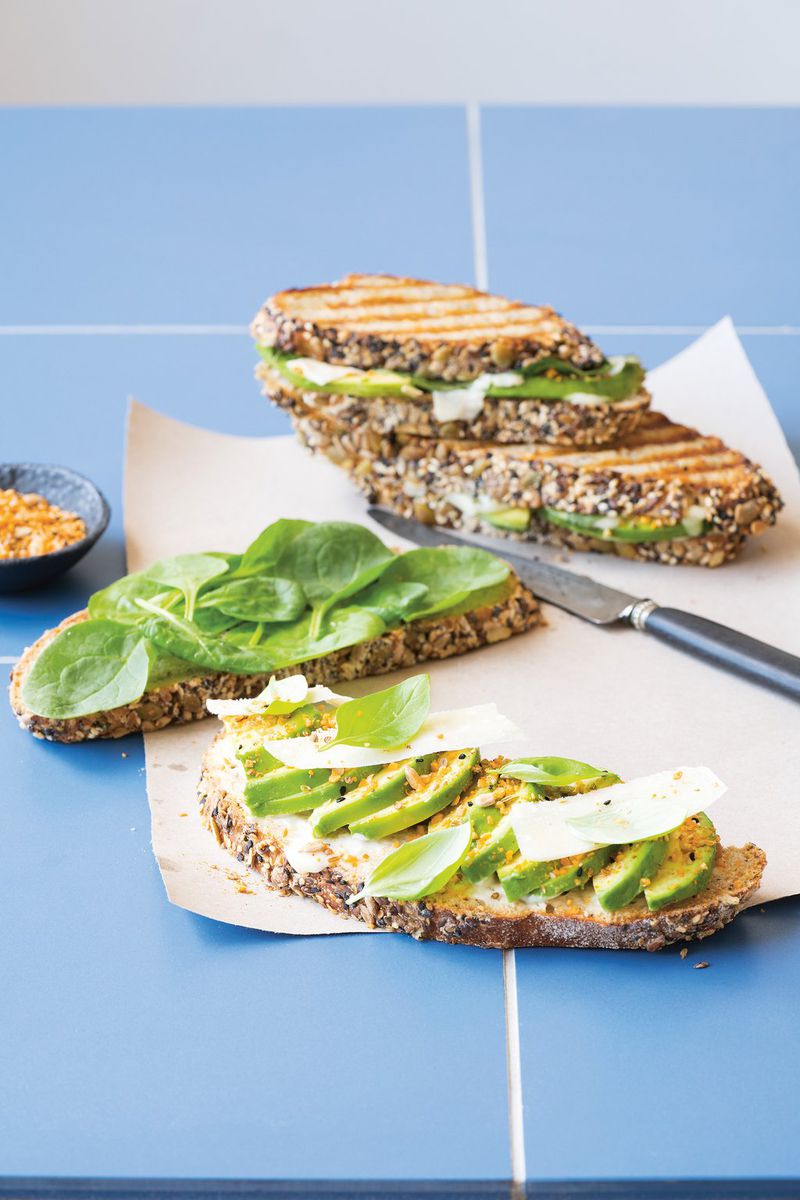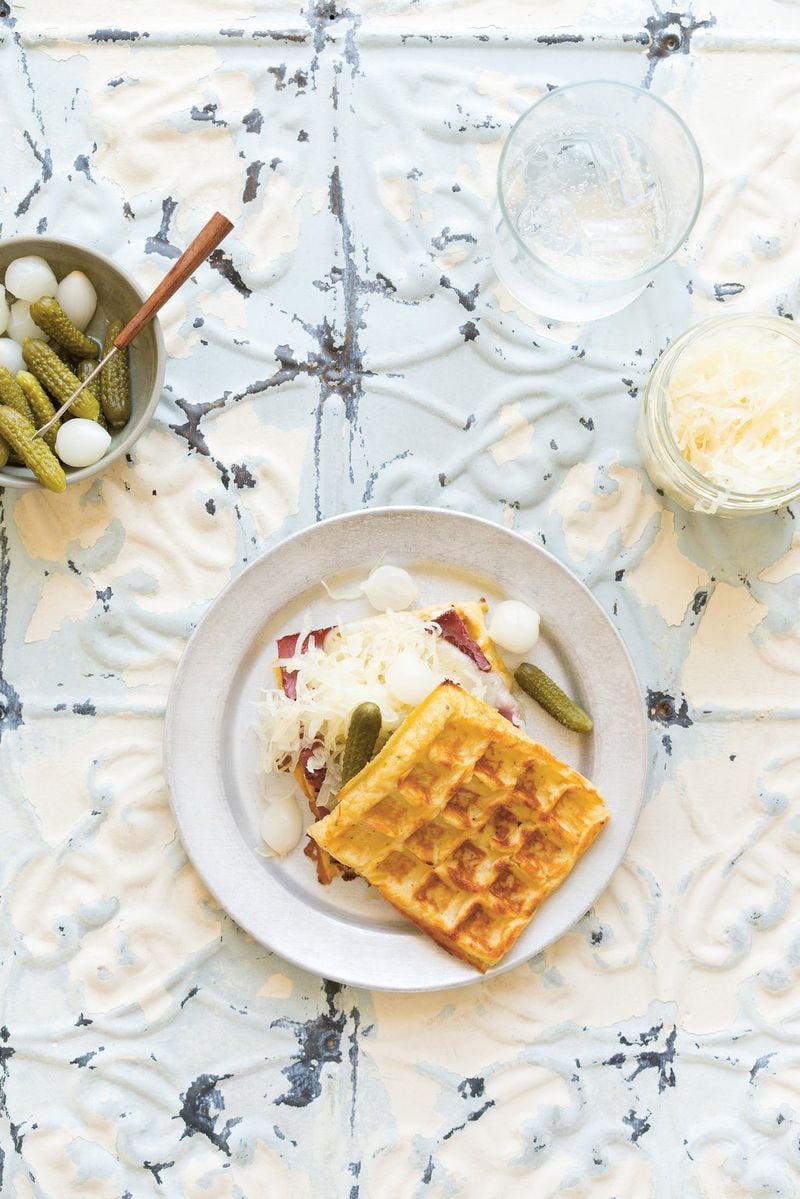Whether it’s a classic ham and cheese on rye or a tower of donuts sandwiched with Nutella and whipped cream cheese, the world of grilled cheese sandwiches is unlimited.
Don’t confine yourself to a slice of American between two slices of white bread. Anything’s fair game. You can add proteins like chicken, pork meatballs or sausage. Vegetables like roasted carrots pair well with goat cheese. Soft fruits like peaches match with soft cheeses like mascarpone. Condiments and sides like walnut pesto and pickled fennel add spice and punch. And if you’re in Great Britain, you just might make a grilled cheese sandwich with baked beans.
And you can serve all of these for breakfast.
What? You’ve never had grilled cheese for breakfast?
Chef Andrew Smith of Westside’s West Egg says for a chef whose days start early, a grilled cheese sandwich can be a quick, yet indulgent and filling breakfast.
“It can start quite basic, with ingredients you’re likely to have on hand at home, or you can upgrade with the addition of multiple cheeses, selection of meats, fruits, vegetables, and even eggs. I am fortunate at West Egg to have fresh bread daily from the TGM Bread bakery. My routine is to add sharp cheddar cheese, plenty of butter, and maybe a couple of slices of crispy bacon. Everything I need to power through the day.”
Smith’s nine-year-old son might not be as agreeable to the concept of grilled cheese for breakfast. “Kids can be so funny about certain foods belonging in certain categories (that’s lunch, not breakfast, Dad!). But as a single dad trying to get him up and ready for school in the morning, I’m ready to add it to the breakfast repertoire. And with something like my Blackberry Bacon Grilled Cheese — cheesy, jammy, bacony — I could probably convince him it belongs as breakfast food.”
Fern Green is the author of “Melts” (Hardie Grant Books, $19.99). She says she wrote the book because grilled cheese is so popular with everyone. “Small humans to big humans love it! It works so well at breakfast time because of the variety you can introduce. What bread? Sourdough, challah or flat? Fancy an egg? Change the cheese, try talaggio? It fills you up and it tastes so good … full of umami hits.”
So let’s review the basics of grilled cheese.
What equipment do you need?
1. No need for a fancy panini press. Use a non-stick skillet. Cast iron is great. And a cast iron grill pan will give you fancy grill marks. Lucky enough to have a griddle on your cooktop? Then you can make grilled cheese sandwiches for the masses.
2. Flipping your sandwich is easier if you have a wide spatula. Another use for that fish spatula in the back of your utensil drawer.
What about the cheese?
1. When picking cheese, consider meltability. “There is nothing worse than chalky cheese in a hot sandwich – you want that oozy, melty, stringy, gooey deliciousness that crisps up right at the edges and leaves you wanting more.”
2. Suggestions: cheddar, Monterey Jack, raclette, mascarpone, ricotta, goat cheese, Gruyere, Stilton
— From Becks Wilkinson author of “Melt It” (Kyle Books, $14.95).
1. Take the cheese out of the refrigerator an hour before you want to make your sandwich. That reduces the amount of time the cheese will take to melt.
2. Grating also reduces the amount of time it takes to melt.
— From Fern Green, author of “Melts” (Hardie Grant Books, $19.99.).
As for how to cook your sandwich, Wilkinson says, “Cook over low to medium heat so you don’t get the outside too brown while the inside is still cold. And eat it immediately.”
Is there anything better than a golden brown and crunchy grilled cheese sandwich? Here are three recipes that make a great breakfast (although, yes, you can eat them any time of the day you’d like).
Croque Madame
This classic recipe is perfect for breakfast. We modified the recipe just a bit from the original in “Melt It” by dividing the ingredients to make four sandwiches instead of the original two. You’ll have lots of béchamel so if you find yourself with extra, it’s the perfect base for making cheese sauce to stir into some macaroni and cheese or to sauce a sauteed piece of fish or steamed vegetables.
We also skipped another step in the original recipe, running the béchamel-covered sandwich under the broiler to brown it before adding the egg. We liked keeping the sauce all creamy, but you should feel free to stick with the original.
One step we didn’t skip was the addition of the sage leaves. They add just the right amount of herbal punch.
Spinach, Avocado & Dukkah
Take your avocado toast up a notch with this recipe.
At first we were skeptical about Parmesan as the sole cheese for melting, but it works perfectly. And one-and-a-half teaspoons seemed that it would be too much dukkah, but you’ll want to use it all. This Egyptian spice mix gives you salt, flavor and crunch. You can make your own, but we tested this recipe with Thyme to Garnish’s Dang Good Dukka, available at http://thymetogarnish.com.
Fern Green, author of “Melts”, chose to use dukkah in this recipe because it goes so well with avocado. She refers to it as a sandwich for the more adventurous grilled sandwich lover.
Potato Waffles with Pastrami and Sauerkraut
Fern Green, author of “Melts”, chooses potato waffles as one way to show that bread isn’t the only vessel for a grilled cheese sandwich. “Potato waffles in particular bring a crispy, pillowy crunch to the table. Sandwiched round a tasty filling, you have to try it.” Plus waffles equals breakfast. Right?
Potato waffles are hugely forgiving. We found that the waffle batter might need seasoning depending on the mashed potatoes you start with. So taste them and see. We also found we needed to adjust the amount of liquid based on the thickness of our mashed potatoes. So maybe you’ll want to add a little milk or buttermilk or whatever was used in the original mashed potatoes so that you end up with a batter that will spread a little. The thinner the batter, the thinner your waffles will be. But be sure your waffle iron is truly nonstick, or treat with a little nonstick cooking spray.
No mashed potatoes on hand? Just bake an 8-ounce potato or several smaller ones (in the microwave, even) and use that instead. Then be sure to add some salt and pepper.
But no matter what we did, potato waffles baked up beautifully. And no, it’s not a mistake. The sandwich will not need butter on the outside to crisp up and melt the cheese.




/cloudfront-us-east-1.images.arcpublishing.com/ajc/P7DYBH6TO7FEKG4SUXQQKADRXE.jpg)



